Veracruz 1631 — Sink or swim?
![]()
-
At the peak of The Age of Sail, European colonial powers were bringing hundreds of thousands of tons of gold bullion, silver and other prizes back to the continent on a daily basis. Ships were often overloaded with goods stolen or traded from the native people, as well as those that were eventually mined, trapped or cultivated in the increasingly prosperous settlements. Veracruz was founded by the infamous conquistador Hernan Cortes in 1519, but by the seventeenth century, it was one of the busiest and wealthiest ports in The New World. Veracruz 1631 is a board game about the desire to pack every vessel from aft to stern with goods, whilst also avoiding having to take The King his mail.
![]()
Overview and turn structure
Veracruz 1631 is a simple game that features three ships on the main board, each of which has a maximum weight capacity and a balance meter. The ships are all different sizes, meaning that each can take a different amount of cargo before it reaches its limit. There’s also a meteorology dial that indicates the current temperament of the weather, which can range from very fine to stormy and anywhere in between. The weight tracks determine when the ships are ready to set sail, whilst the balance meter and the meteorology charts combined determine the chance that a ship will sink on its way home.
The aim of Veracruz 1631 is to fill the ships with gold and silver (on one side) and corn and cacao (on the other side). Stones and empty chests can be used on either side to help maintain balance, which is important because none of this would matter if the players weren’t chasing hidden objectives. Where Veracruz 1631 is concerned, these objectives are based on investment and betting cards, which between them can drive a player to want to see certain ships sink.
That, in turn, is what drives the way in which those player position cargo — all of which is taken from cards in their hand. It’s not hard to unbalance a ship if you have several chests filled with heavy gold, but of course, one or more other players might want to prevent that from happening. Cards are played turn by turn in this way until the weight limit for each ship is reached. A doubloon is periodically flipped to move the meteorology track one way or the other. Once the last ship is full, this shift in weather happens one more time, then players assess the outcome.
Actually playing turns couldn’t be simpler, since there are actually only two actions to choose from. The first of them is indeed to place a cargo card onto one of the ships. The other, which you’ll only do twice during the game, is to bet on one of the galleons. Each player receives just two cards in their chosen colour – one that indicates a ship will sink, and the other that it will reach port. When placed, these cards are placed secretly on the relevant slot for a given ship at the bottom of the board.
At the end of the game, players score points based on the outcome of their investment card (which will be dependent upon the required number of a given commodity returning home) as well as the outcome of any bets. Unsuccessful bets will cost a player one point, whereas each successful bet will be scored based on what order it was placed in — the first successful bet on any ship will score four points, the next will score two, then one. Veracruz 1631 is a low scoring game that usually plays in about twenty minutes per game, so it’s fairly quick to run through and start again, which does tend to be the way that players enjoy it most.
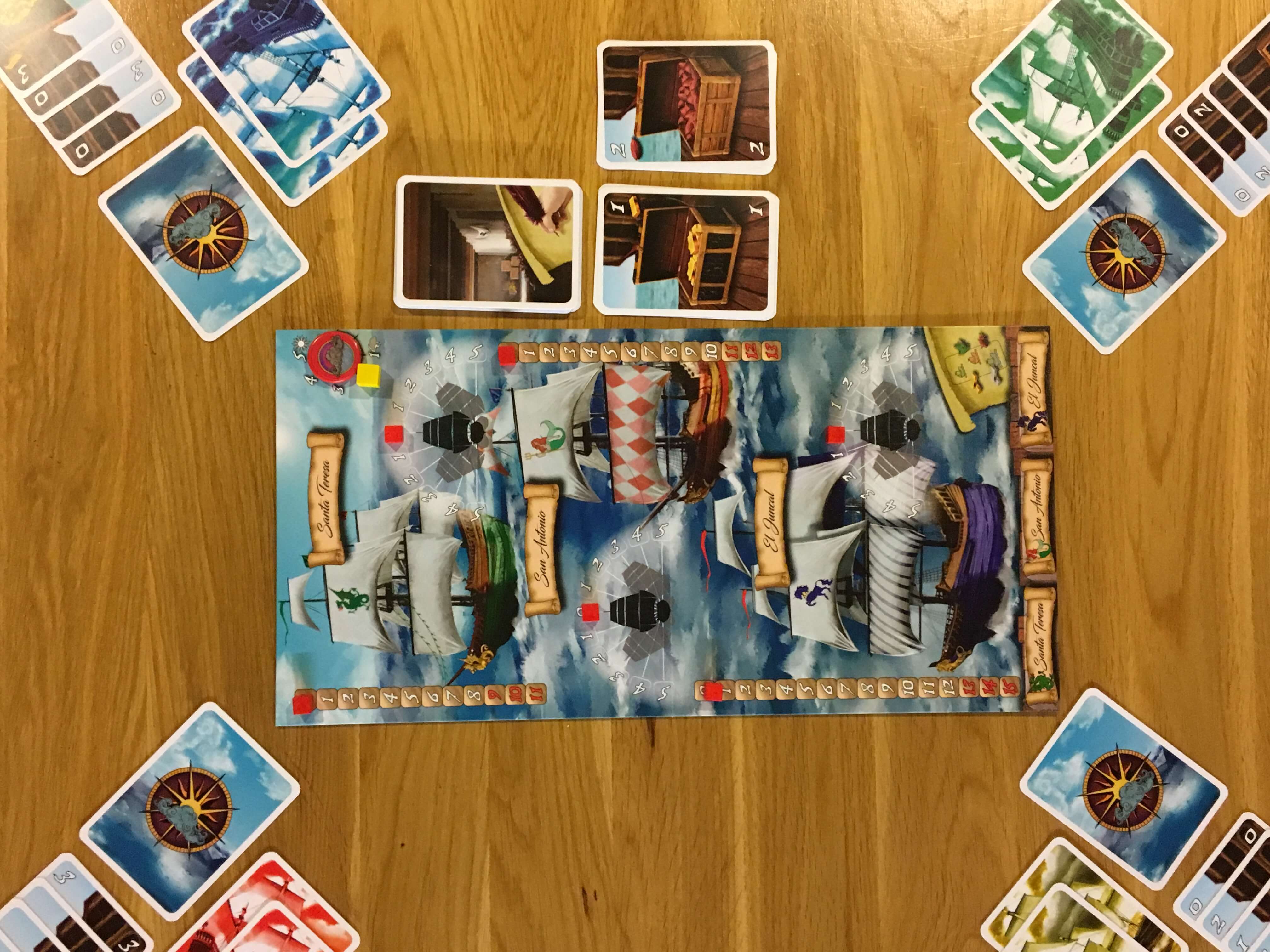
Components
For a small box production from a relatively independent publisher (GDM Games) the build quality in Veracruz 1631 is excellent and definitely scores an A for effort. The board is thick and the galleon visuals are all slightly different, with lots of lavish attention to detail. The balance and weight tracks stand out clearly enough to be seen against each of the ships and although the font across several of the ships and cards is a bit elaborate, it is perfectly legible once you are used to it.
The cards are all very colourful and can easily be distinguished from one another, although some of the images are at odds with the backgrounds and so on. There’s a general feel that the budget was low, but the art designer was talented enough to make the most of their own talent, as well as whatever royalty free IP they could get their hands on. In any case, actual production quality was not sacrificed and the card stock, wooden pieces and similar are all of the standard you would expect from a full price title.
The instructions are provided in several European languages, with each of English, Spanish, French and German receiving its own individual manual. The English manual has clearly been translated from the publishers native Spanish into English, but the job is a good one. There are only a few pages to work through and every rule is clear, except perhaps for how the draw deck(s) are placed. For the benefit of anyone else who also get stuck here, I simply place two face up decks of cards to draw from and allow the active player to choose the one they want from the two available.
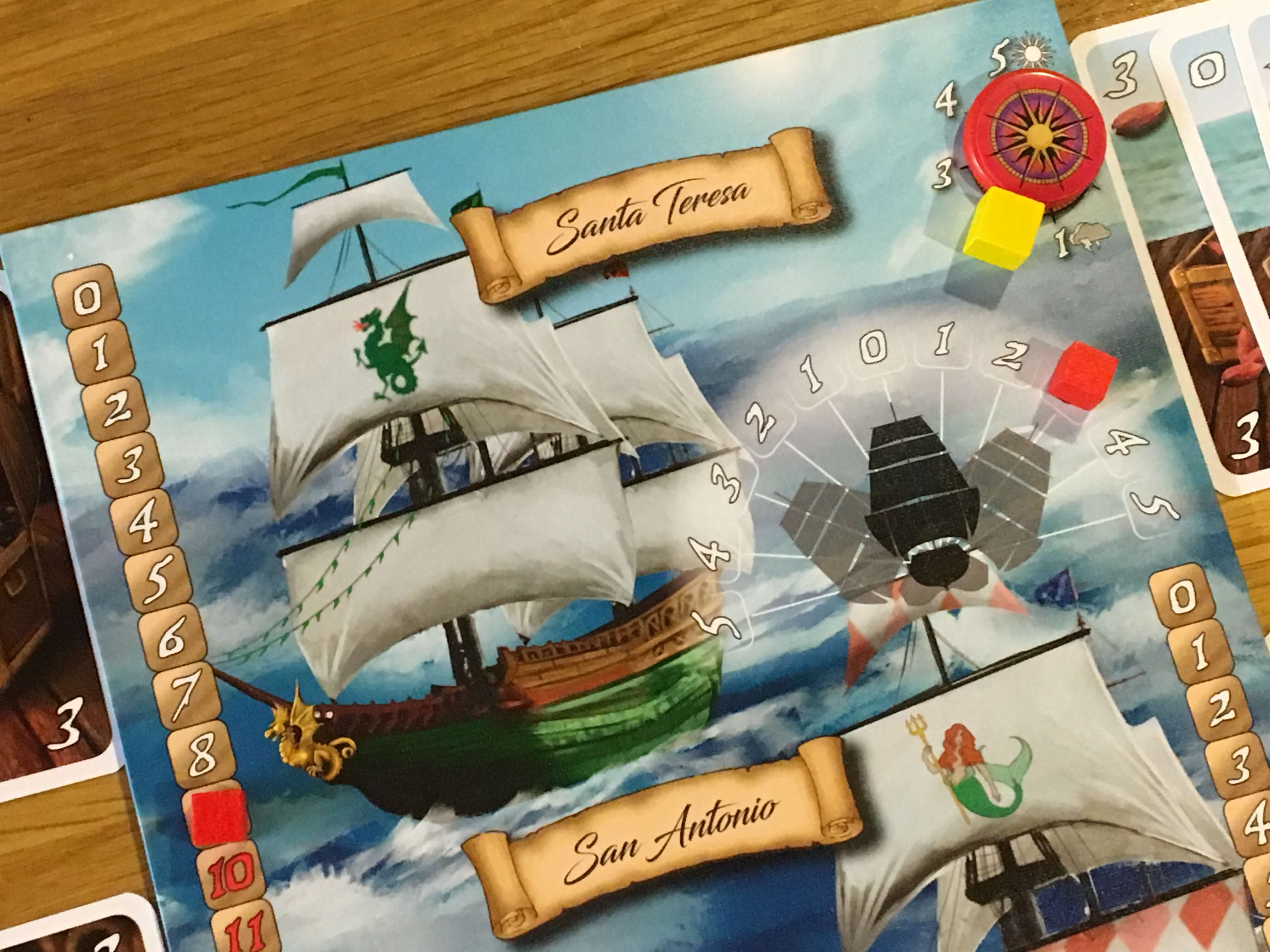
Game experience
Playing Veracruz 1631 is always good, honest fun. It’s a fast game that is super easy to teach and generally quite engaging since it has an almost completely unique theme and set of mechanics that are inextricably linked. It’s not a game that should be overthought really, and there are only a few viable tactics. Players can either bet early and attempt to load up a ship in their favour quite directly, or they can play it cool and wait to see what others do before revealing their plot.
By revealing, I don’t mean showing their bet or investment cards to the other players, I simply mean that through player behaviour, it is often possible to work out what others want to achieve. This is where the fun really begins in Veracruz 1631, since any good player will likely have gathered some rocks or (ideally) empty chests (to cancel other card values) into their hand. These can then be used to mess with other players overt objectives and to advance your own.
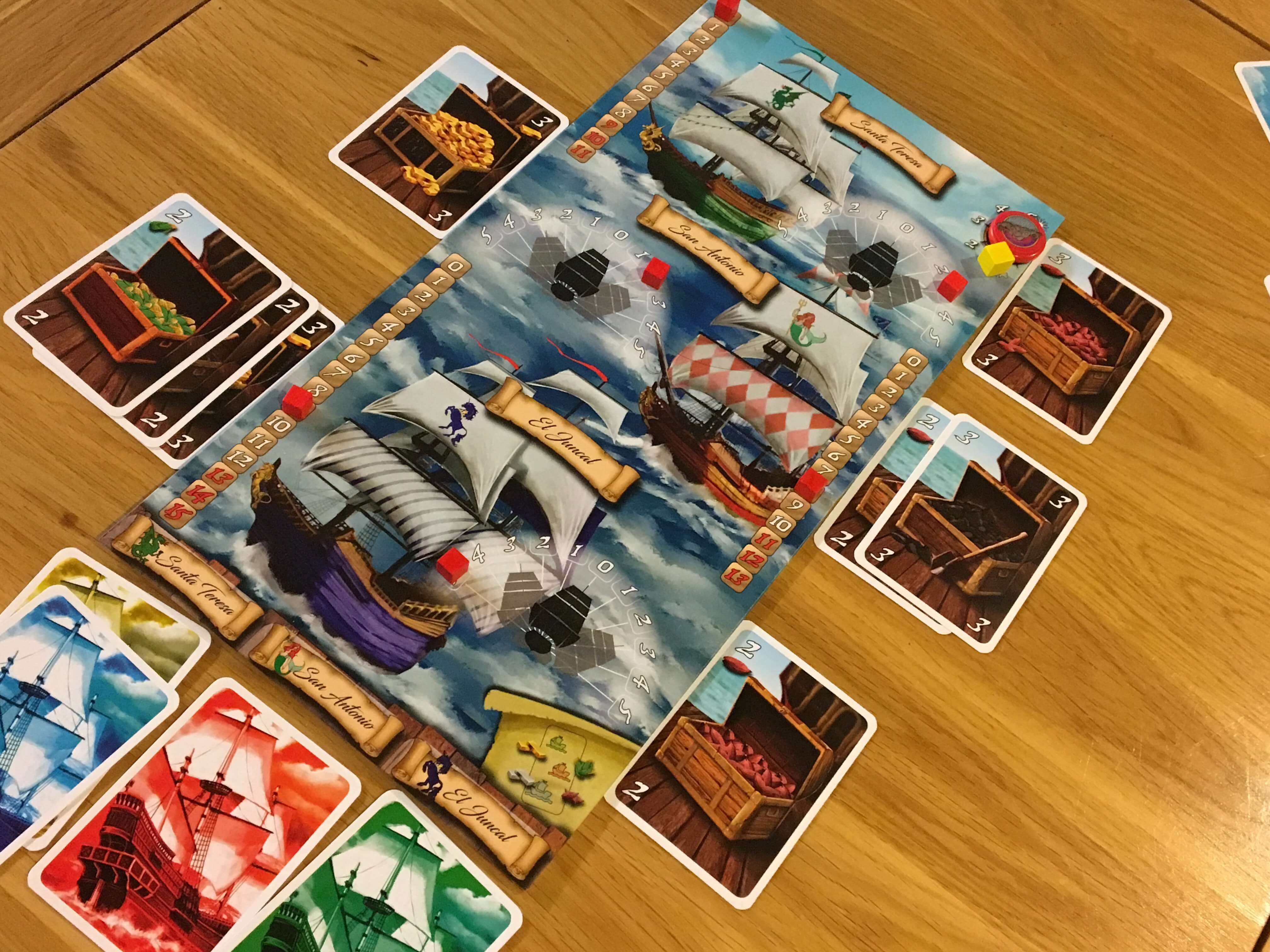
Conclusion
When the waves calm and all is settled, Veracruz 1631 is a tight, small game that is well designed and has an excellent, thematic mechanic around which the whole game centres. The focus on betting and working towards your investment makes perfect sense when aligned to the balance mechanic – it’s very clear from the opening moments of the game what you’ll need to do to win.
This straightforwardness and enjoyable theme makes Veracruz 1631 fairly endearing, which is a feeling that is only enhanced by the speed of play. I doubt you’ll want to play it more than two or three times, which makes it more fitting as a filler game, but it is a satisfying and unusual one. As such, I’d say that there’s a place for this interesting and unusual game in most collections, especially if the theme or sound of the mechanics appeal to you.
A copy of Veracruz 1631 was provided for review purposes. You can find out more about it on the website of publisher GDM Games.
Love board games? Check out our list of the top board games we’ve reviewed.
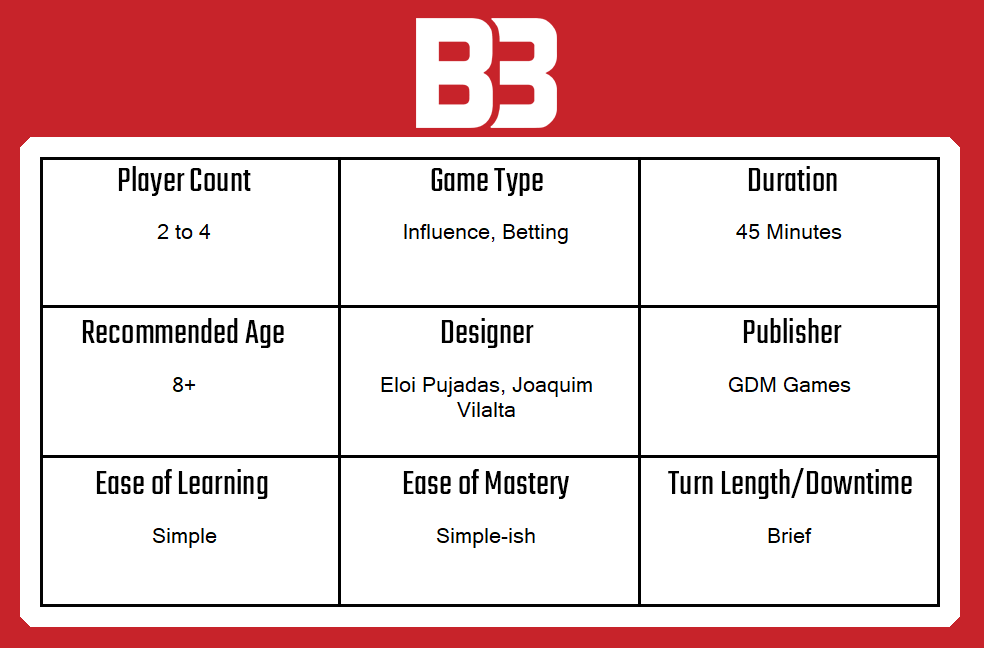
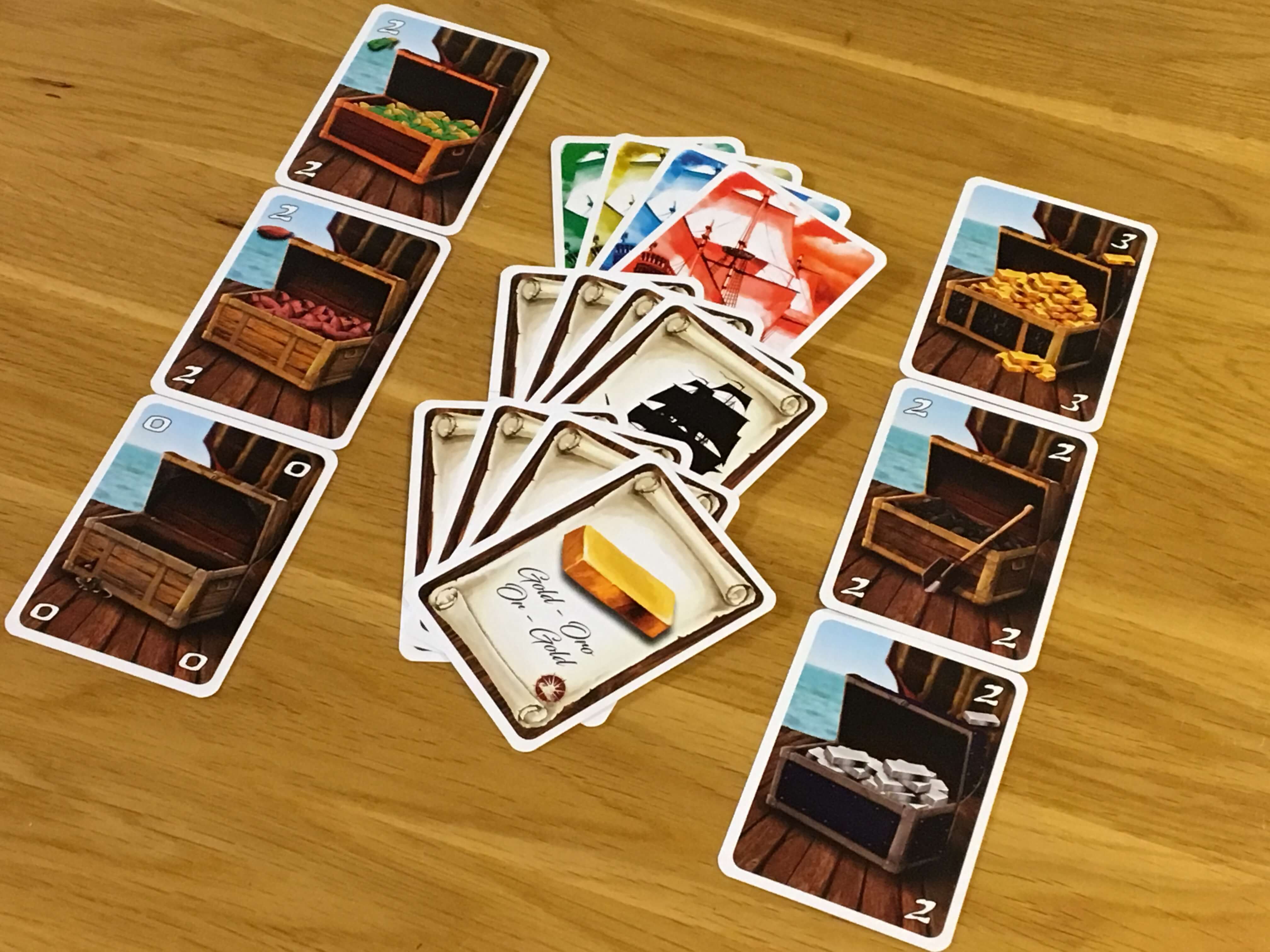
Comments are closed.